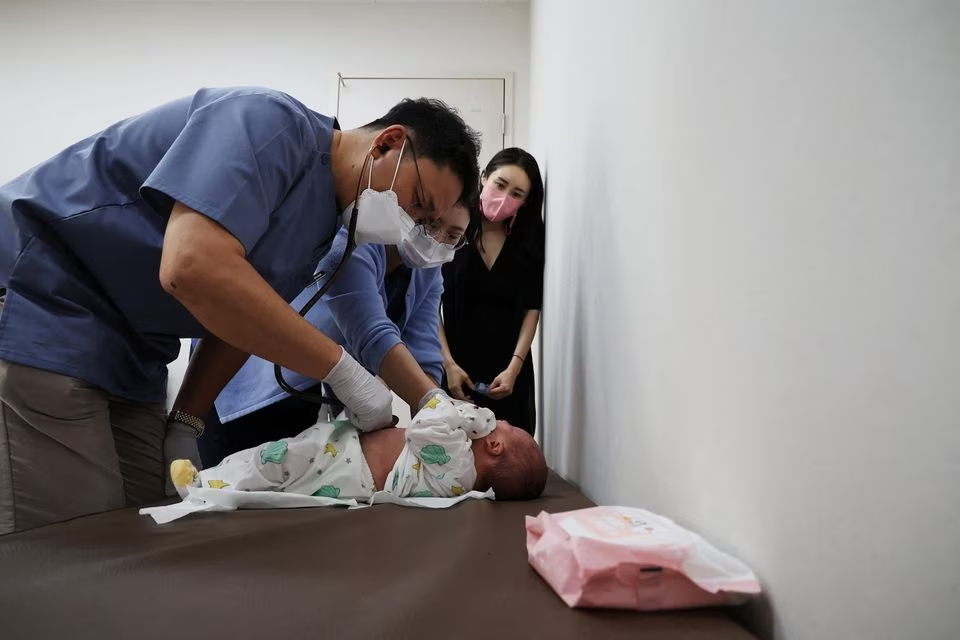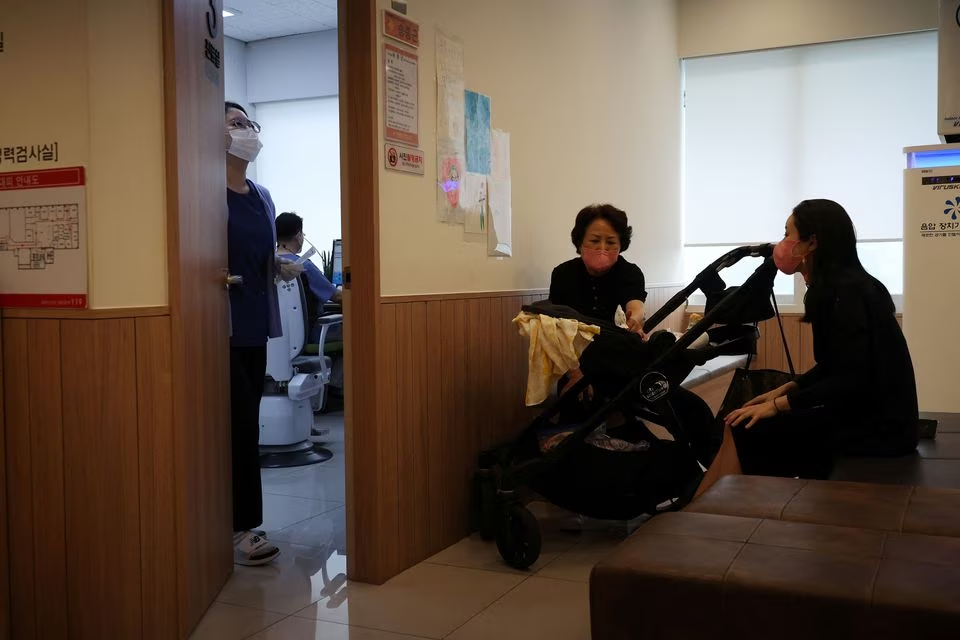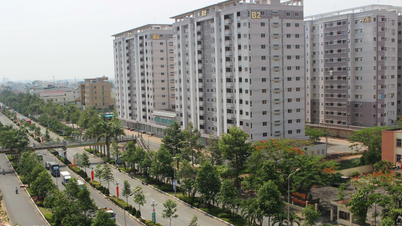South Korea's birth rate, already the lowest in the world , has continued to fall to 0.78, according to government data released in February. That's not even half the 2.1 rate needed for a country to maintain a stable population without migration, NPR reported.
Pediatrician quits practice
The rock-bottom birth rate has led to a host of problems, including a shortage of pediatricians. As fewer children are being born, pediatricians “seeing no future” are leaving the profession or changing specialties, leaving hospitals severely understaffed. This increases the risk to children’s health, according to Reuters.

Doctor Song Jong-geun examines a child patient in Seoul.
Reuters cited data from the Seoul Institute, a public administration think tank, showing that the number of clinics and children's hospitals in the capital Seoul fell 12.5% between 2018 and 2022, to just 456. During the same period, the number of psychiatric clinics increased by 76.8%, while anesthesia centers increased by 41.2%.
The Ministry of Health and Welfare acknowledged that there were “shortcomings” in the system and said measures were being taken to address the problem. According to ministry data, hospitals were only staffed with 16.3 percent of pediatricians in the first half of this year, down from 97.4 percent in 2013.
The shortage means children have to wait longer to get medical treatment. Sowha, South Korea’s oldest children’s hospital, recently closed every Saturday and Sunday afternoon due to staff shortages, the first time in 77 years that the hospital has done so. Other hospitals have reduced nighttime treatments and closed emergency rooms for children.
Dr. Song Dae-jin of Korea University Guro Hospital said he worries that staff shortages could soon cripple his team's ability to provide emergency care. "At this rate, we won't be able to survive the year," Dr. Song said. "A mild illness is fine for a day or two, but if a severe illness is not examined and treated promptly, the consequences will be dire."
The problem of the insurance system
Doctors say low costs are a particular problem for pediatrics because the insurance system has not been revised to accommodate the decline in the number of children. "Overseas, the government pays enough to maintain a hospital even if a doctor sees only 20 patients a day," said Dr. Lim Hyun-taek, president of the Korean Pediatric Association.

Jung Seung-yeon (right), 38, takes her child to a pediatric clinic in Seoul.
However, the cost of each treatment in Korea is about 10 USD (230 thousand VND), so clinics have to receive about 80 patients per day to have enough funds to operate, according to Dr. Lim.
South Korea's health ministry said measures on fees and insurance compensation were introduced this year to supplement the "restrictions". The ministry also proposed setting up state-funded centers and regulating major hospitals to maintain emergency treatment for children.
Additionally, data from the Health Insurance Review and Assessment Service shows that pediatricians are paid the lowest, (57 percent lower) than the average for other specialists in Korea.
Korean women freeze eggs, delay marriage for fear of not having enough money to raise children
Going against the goal of raising the birth rate
The situation is so alarming that some couples say they are unsure whether to have children, despite the government subsidizing billions of dollars each year for child care to boost the birth rate.
Reuters quoted expert Lee Ju-yul, professor of health management at Namseoul University (South Korea), as saying that the failure to allocate resources for child care has weakened the impact of the "huge" amount of money spent on increasing the birth rate.
Meanwhile, NPR quoted Andrew Yeo, an expert at the Brookings Institution's East Asia Policy Research Center (USA), saying that the problem here is the "temporary" approach of the Korean government. According to this expert, the current solutions of Korea only show that the country is trying to solve the problem but not really having results. According to him, promoting fertility is not the way to handle the problem.
Experts say the falling marriage rate can be attributed to South Korea’s extreme work culture, along with ongoing gender issues. One of the most pressing issues is the lack of affordable housing, especially in big cities like Seoul, which are increasingly attracting young people from rural areas with the prospect of better education and employment opportunities.
Source link


![[Photo] Party and State leaders attend the special art program "You are Ho Chi Minh"](https://vphoto.vietnam.vn/thumb/1200x675/vietnam/resource/IMAGE/2025/5/18/6895913f94fd4c51aa4564ab14c3f250)


![[Photo] Ready for the top competitions of Vietnamese table tennis](https://vphoto.vietnam.vn/thumb/1200x675/vietnam/resource/IMAGE/2025/5/18/9c547c497c5a4ade8f98c8e7d44f5a41)
![[Photo] Many young people patiently lined up under the hot sun to receive a special supplement from Nhan Dan Newspaper.](https://vphoto.vietnam.vn/thumb/1200x675/vietnam/resource/IMAGE/2025/5/18/6f19d322f9364f0ebb6fbfe9377842d3)































































































Comment (0)